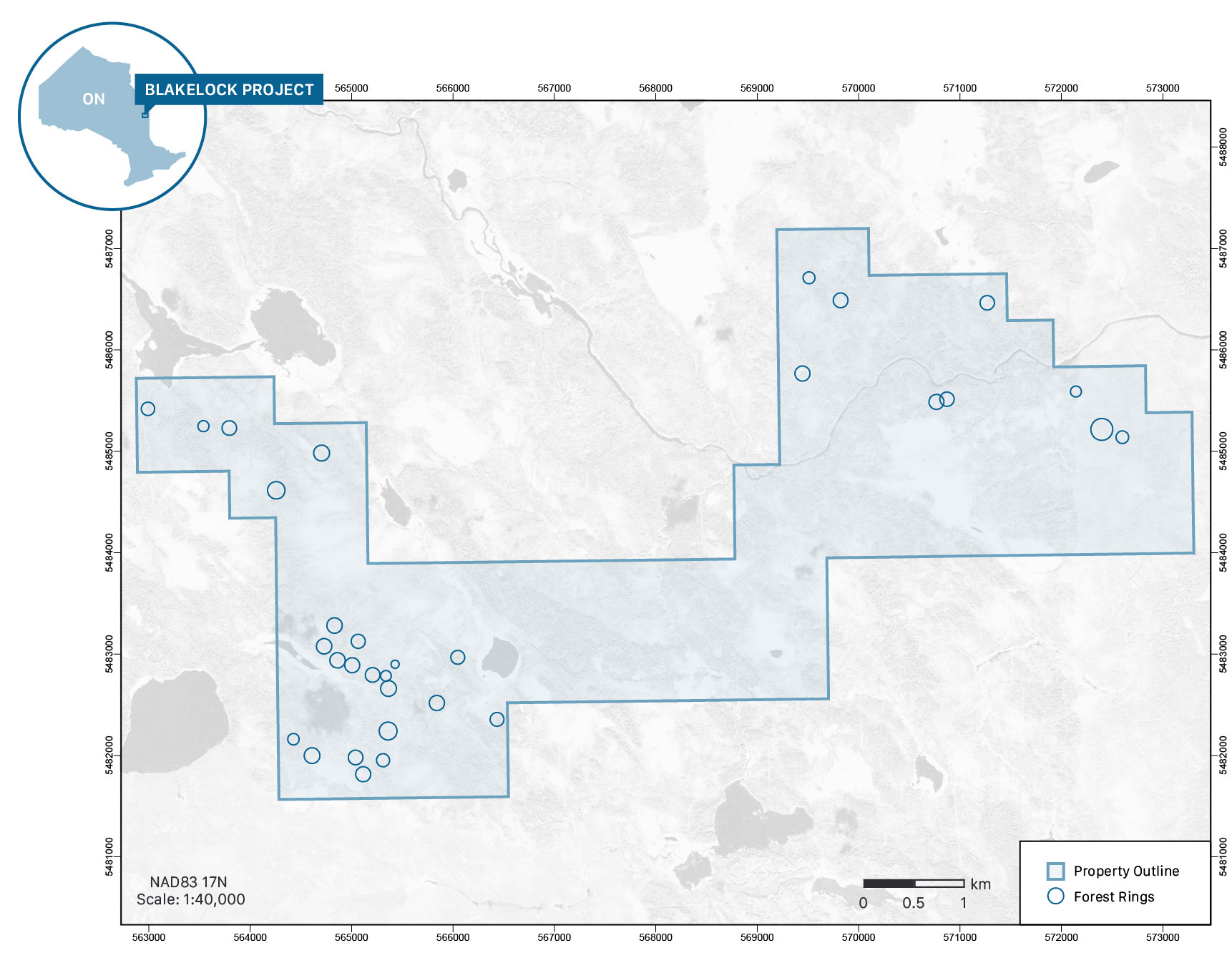LOCATION: Northern Ontario
OWNERSHIP: 100%
SIZE: 2,207 hectares (22.07km2)
Project Highlights:
- Hydrogen potential present through serpentinization with subcircular depressions highlighting gas or fluid percolation to the surface.1
- Forest rings in northern Ontario are abundant above glaciomarine and marine sediments of Quaternary age and commonly occur over Phanerozoic bedrock.2
- According to the Ontario Geological Survey, the forest rings are caused by giant, naturally occurring electrochemical cells — big centres of negative charges (reduced chimneys) that are frequently situated over metal or mineral deposits.
- Hydrogen is theorized to form at the redox boundary at the ring edge, with the oxidation of transitional metals and/or sulfur species (producing hydrogen H+).3
- When hydrogen (H2) emanations affect the soils, small depressions and vegetation gaps are observed which are referred to as fairy circles or forest rings.4
- Hydrogen Emanations in Intracratonic Areas: New Guidelines for Early Exploration Basin Screening
- Veillette and Giroux, 1999; Hamilton et al., 2004a
- Spontaneous potential and redox responses over a forest ring, Hamelton & Hattori, May 2008
- Hydrogen Emanations in Intracratonic Areas: New Guidelines for Early Exploration Basin Screening
Stay Informed
News and Updates



